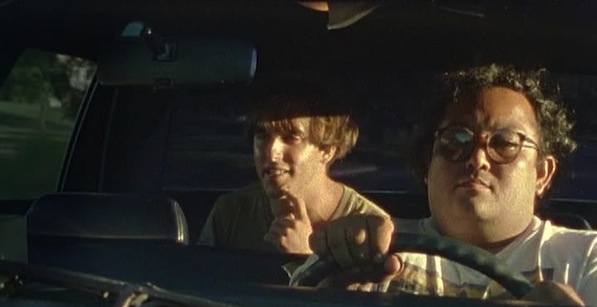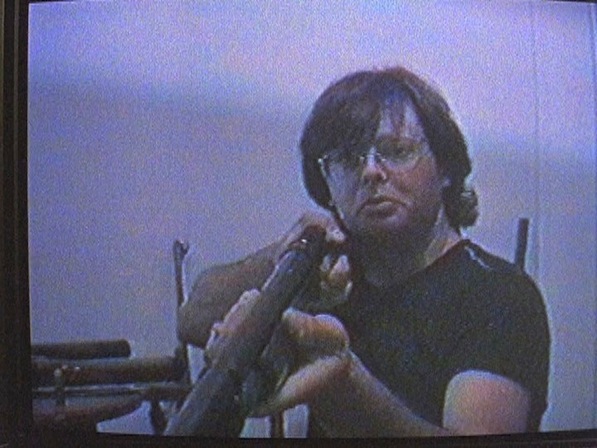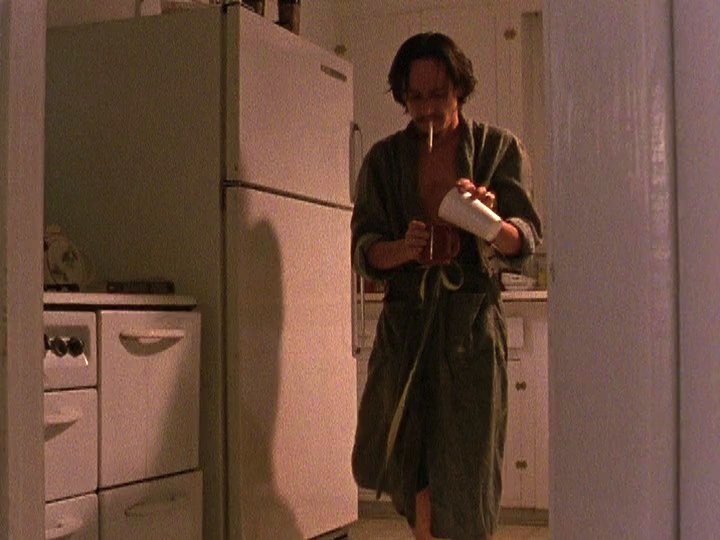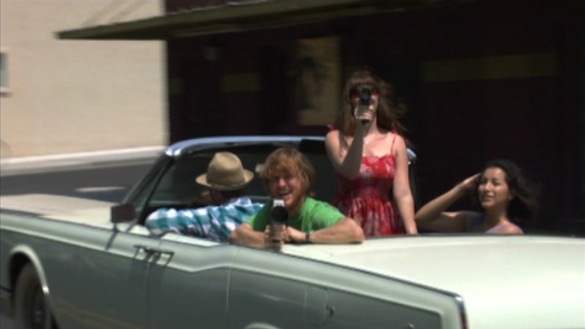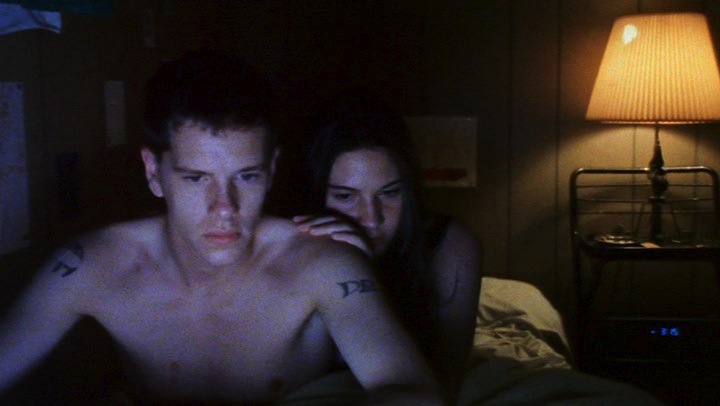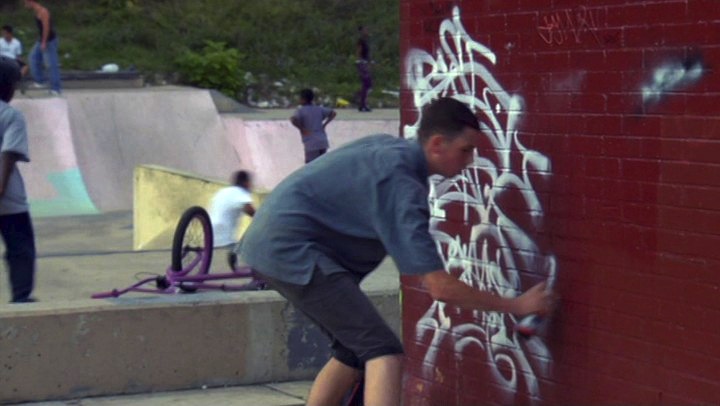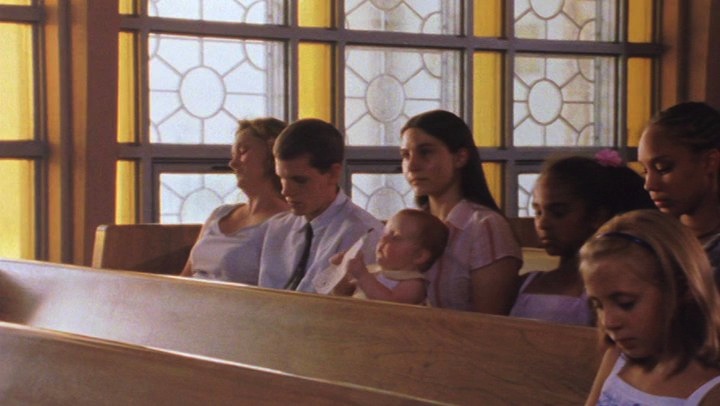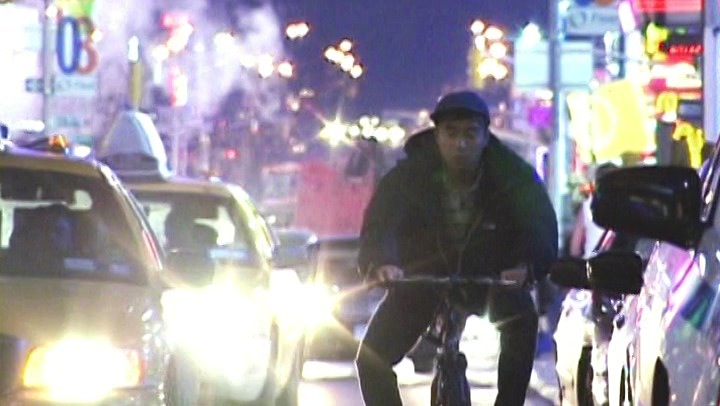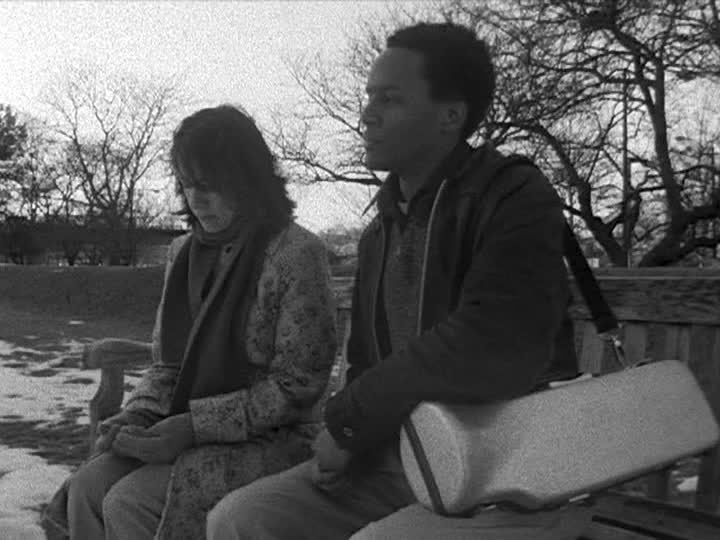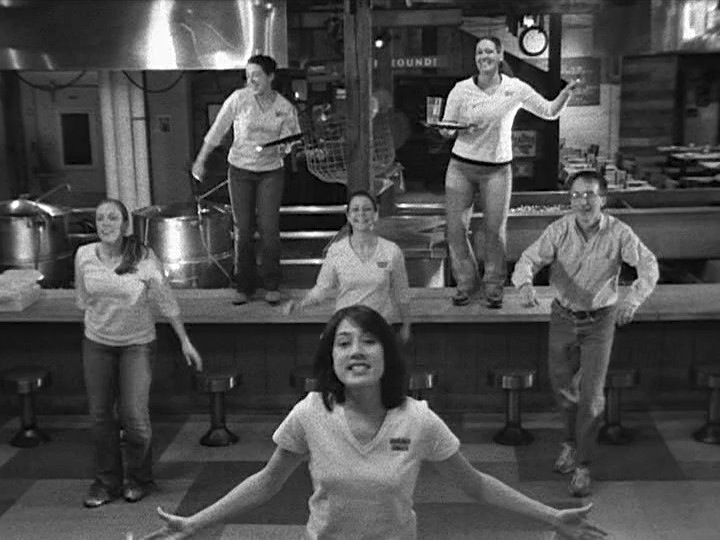As an aesthetic response, incredulity—“I don’t believe this! Can you believe this!”—exhausts its utility almost instantaneously. The thing happened, whether or not it landed within what you had previously defined as the bounds of plausibility; so, how might your worldview expand to encompass the circumstances that produced it?
In “Every Film Is a Social Documentary,” an early piece of criticism by André Bazin, the great man wrote:
The oneiric character of cinema, linked to the illusory nature of its image as much as to its lightly hypnotic mode of operation, is no less crucial than its realism […] In a certain sense, cinema cannot lie, and every film can be considered as a social documentary. To the extent that it has come to satisfy the dream desires of the masses, it becomes its own dream. The sole objective criterion is success. Every producer who has made a film that pleases knows how to fill the type of imaginary void within which his film took shape.
That is, that a truly successful film is so because it resonates with the hearts and minds of a particular society at a particular time—it is a component of what J. Hoberman has called “The Dream Life,” running parallel to culture and politics. But Bazin’s notion is true in a more prosaic sense as well, in that everything from a film’s costumes to its editing style to its assumptions about gender roles is a necessarily authentic artifact of a very particular time and place.
The specific reason it’s intellectually incurious to laugh at a “dated” film is that it’s ahistorical thinking. It’s a way of worshipping the present as somehow unsullied by any attitude that might ever prove temporary; and it ignores the fascination of all the temporary contexts converging onto any work of art. Even the worst MST3K-derided drive-in movie is a documentary of something, even if just the sexual pathologies of a particular exploitation filmmaker, and of the cinematic fads he illiterately ripped off.
In 2009, the critic Robert Koehler described a “cinema of in-between-ness,” a particular current of films carrying on the now centuries-old discourse about the nature of truth in cinema. These films, frequently semi-fictional stories of characters derived from the lives of the nonprofessional actors who play them, are often anthropological in intention, making up a deficit in viewer awareness of a particular people or iconic individual remote from their understanding, and are also frequently explicit in acknowledging the cinematic apparatus which shapes and presents their truth (or “truth”).
This last aspect, reflexivity, is especially fascinating because it allows us to consider how all films might work out an idea of themselves as a finite, hardly objective, but vital record. This list will focus on contemporary American independent films, made during a period of time in which technological advances have allowed ever more hidden corners of the country to appear on the screen. That the transformation of their milieus into a fiction feature is also its own particular kind of truth, is a fact which each of these films, in their way, acknowledges.
1. Slacker (Richard Linklater, 1991)
One of the seminal Amerindies, and maybe one of our greatest documentaries as well. Linklater, in interviews, is very careful to point out that his nonprofessional cast, comprised of friends, colleagues, and Austinites notable and random, are actors playing parts, whether scripted or improvised. He’s equally straightforward, though, about the film as being the product of the very particular air he was breathing as a young filmmaker and good listener in Austin’s West Campus at the time. (In the last link, one actor recalls: “They handed out a little sticker to people they thought looked interesting. It said, If you want to be in an interesting movie, show up at this audition. Rick asked me, ‘Could you just improvise a bit?’ I said, ‘About what?’ And he said, ‘Um, UFOs?’ It had been a passion of mine, and I’d had remarkable experiences, and I started rattling it off.”) Slacker is a hugely influential indie-film success for many reasons. For the purposes of this list, what’s especially germane are its observational fascination, and its self-awareness regarding that fascination’s present and future value.
As its title suggests, Slacker is richly evocative of the early-nineties media phenomenon known as Generation X: dig those postcollegiates, in their shorts and oversized dress shirts, with nothing to do during the workday, except to hang out in coffee shops, used bookstores, bars and creaky commune-ish apartment houses. But the film can’t be reduced to its zeitgeist, thanks to Linklater’s curiosity about people, and the defiantly weird college town in the heart of Texas which gratifies it. The end credits read like the track listing for the greatest album Guided By Voices never recorded, and give a sense of the suggestive, surrealist flavor of the film. Character names include, but are by no means limited to: “Grocery Grabber of Death’s Bounty,” “Dostoyevsky Wannabe,” “Been on the Moon Since the 50’s,” “S-T-E-V-E with a Van,” and “Old Man Recording Thoughts.” Slacker’s importance as a tribute to, and a template for, the tradition of American regional cinema, can be seen in its enduring importance to Austin: it was even remade, after a fashion, in celebration of the film’s 20th anniversary, by two dozen filmmakers associated with the Linklater-founded Austin Film Society.
But in the film’s final minutes, Linklater makes it clear that Slacker is as much about time as place. (This was forward-thinking of him, as Austin, like everywhere else in the world forever and always, looks very different today than it did twenty years ago.) In the film’s final minutes, we’re following a ranting would-be prophet, driving through residential neighborhoods making apocalyptic pronouncements through a loudspeaker mounted to his car like a latter-day Hal Phillip Walker. A convertible filled with kids drives up alongside; someone points a Super 8mm camera at him, and bouncy nondiegetic jazz music kicks in as we switch to its shaky, vital, saturated perspective. In this home movie-within-the hometown movie, the young people in the convertible drink, read, drive with the top down and point cameras at each other. They stop the car, dash up to the top of a cliff to admire the view, and then, at last, someone grabs a camera and chucks it off the side. We switch to slow-motion, then a confused swirl of footage, and then cut to black. Ending his film this way, Linklater frames Slacker as pure charismatic happenstance, imbued with all the energy of youth—as well as its secret tenuousness.
2. Hamilton (Matt Porterfield, 2006)
Porterfield’s second feature, Putty Hill, featured to-camera interviews with the skaters and tattoo artists cast as versions of themselves, an explicit acknowledgement of the film’s anthropological intentions. But his debut feature, a lovely, low-key domestic drama similarly set in weedy outer Baltimore, also sets its sights on posterity, though in a more subtle way.
Porterfield’s characters are lower-middle-class (a tenuous category), and to a certain extent Hamilton resembles any number of uninflected films about the simple trials of “marginal” characters. It depicts two days in the life of the young mother of a small child; the child’s father; the child’s paternal grandmother, who brokers visitations between her son and his baby-mama, who lives in her house; and assorted friends and family. The mother works at a bakery, and looks over old family photos; the father leaves off mowing lawns at work to play with the client’s dog, and plays video games silently, late at night; everyone goes together to church on Sunday. It’s a nuanced group portrait that illuminates ad-hoc family arrangements improvised out of both specific socioeconomic realities and an unpredictable human element.
But “marginal” is also a literal, visual conception here. The emphasis is on tangential details, dramatically and visually: we spend time in tight-angle shots of neighborhood children playing on swings and trampolines, gliding or bouncing in and out of the frame. The nonprofessional cast underplays, and the sound mix is delicate, with dialogue infrequent, soft-spoken, and not always clearly audible over the hum of traffic. This is less a slice of life than a sliver. And, as shot in comforting, milky light by Jeremy Saulnier (America’s next great cinematographer), Hamilton begins to seem not dirty-realist but lyrical; the lives on screen aren’t marginal, but rather ephemeral. The film seems almost to be cocooning its characters in their specific moment in time.
3. Take Out (Sean Baker and Shih-Ching Tsou, 2008)
Take Out is a story told from the point of view of an illegal immigrant laborer, but its approach is less journalistic than presentational. Ming Ding (Charles Jang), a deliveryman for a Chinese takeout in New York, has to double his usual haul of tips for a day’s shift, in order to pay off the smugglers who brought him over. As he cycles across several neighborhoods on his trips, we’re treated to street-level views of the city’s traffic and architecture; as well as to an endlessly fascinating array of apartment building interiors, and the real New Yorkers—of every age, color, affect and status—who answer their doors, standing in the frame like actors on a proscenium stage, and offering tantalizing glimpses of their home lives over either shoulder. The film is rigorous, and educational, about the day-to-day routines and economic calculations of a big city’s invisible workforce. But, in keeping with a city whose residents are perpetually fascinated by what they can glean of fellow-residents’ living arrangements, it’s also an oblique city symphony, with each door opening out into a new direction.
4. Guy and Madeline on a Park Bench (Damien Chazelle, 2010)
Chazelle’s “mumblecore musical,” in the dated phrase of several commenters, is a resourcefully lovely portrait of Boston, shot on 16mm black and white film stock, recalling the slight grain and lucid contrast of so many great urban home movies. The city—and the kind of semi-personalized interiors you’d expect the director of a Havard thesis film, as this was, to have access to—is backdrop for a loosely vérité portrait of a young woman and her jazz-trumpeter ex, together and apart, all simmering romantic dissatisfaction and hmm-ed and umm-ed subtext. Guy’s trumpet solos, during practice, rehearsals, and performances, give the dirty realism a splash of romance. But it’s much more than that: as in any musical, the characters break out into song—not on soundstages, but rather while walking past a row of food carts in the park while office workers in summer casual enjoy their lunch break; or, in one late showtune, during the cleanup shift a chain restaurant, with waitresses in uniforms dancing on the tabletops.
Chazelle isn’t after cheap contrast between drudgery and movie-magic escapism, here. In building its showstopping sequences up out of the raw material of city life—walking in the shadow of landmark architecture, and squabbling in cramped kitchens—Guy and Madeline shows how even the Dream Life of musicals exists within the regular flow of life as lived.

